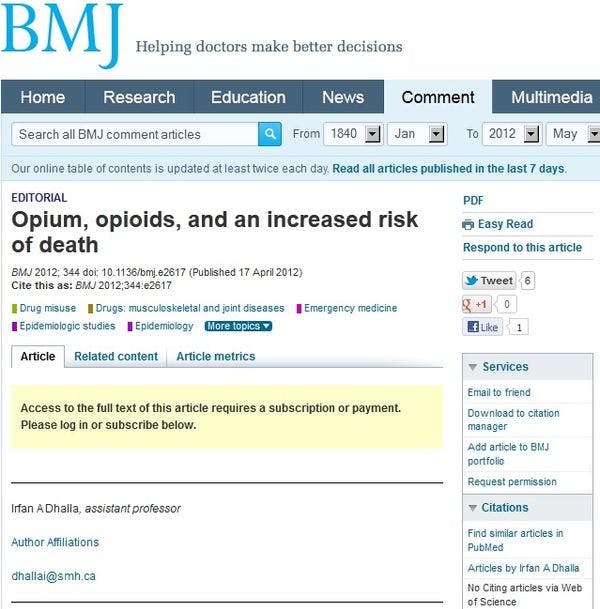Opium, opioids, and an increased risk of death
BMJ 2012;344:e2617 [restricted access], by Irfan A Dhalla
Opium has been used medicinally and recreationally for millennia. A century ago, it was claimed that 15% of American doctors and a quarter of Chinese men were addicted to opium.1 2 Since then, owing to a combination of criminalisation, stigmatisation, medicalisation, and the availability of other psychoactive drugs, the use of opium has almost completely ceased in many countries and purified semi-synthetic and synthetic opioids are much more widely used. Opium use is largely limited to regions in central Asia where the opium poppy is cultivated.
In the linked cohort study conducted in the Iranian province of Golestan (doi:10.1136/bmj.e2502), Khademi and colleagues find that opium use is associated with almost double the risk of death from any cause.3 The key drivers of this increased risk were cardiovascular disease and cancer rather that respiratory and central nervous system depression, which are the mechanisms of death in opioid overdose. Opium use in this cohort was also associated with an increased risk of death from asthma and chronic obstructive pulmonary disease, cirrhosis, tuberculosis, and other infections.
Keep up-to-date with drug policy developments by subscribing to the IDPC Monthly Alert.
Topics
Related Profiles
- British Medical Journal
